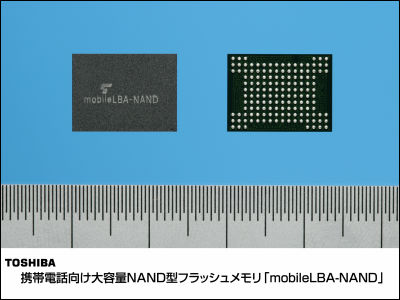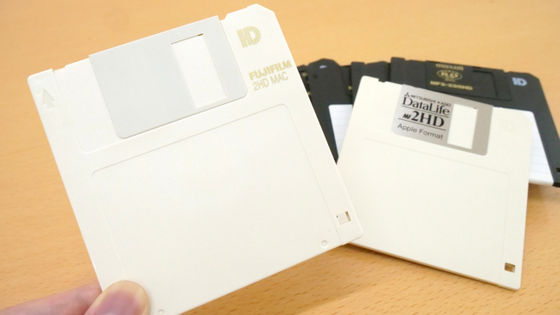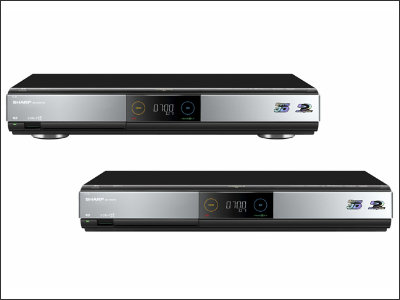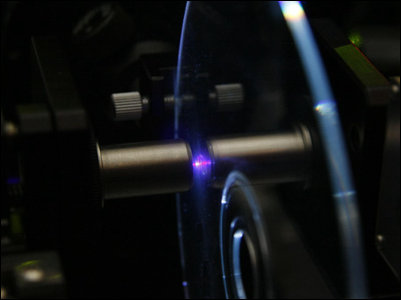Never become mainstream, there are various individual recording mediums that disappeared from the front stage of history

Various large capacity recording media such as HDD, flash memory, and Blu - ray disc are prevalent today, but never become mainstream, they disappeared from the front stage of history Very unique personality There are various recording media.
It has been extensively lineuped from things that many people have seen someday to things that they have quietly disappeared almost without touching the eyes of people, and it has become an interesting content.
Details are as below.
1: 2 inch floppy disk (video floppy disk)

Recording medium for "electronic still video camera" which Sony produced trial in 1981, and was released also by other companies. The recording capacity was 720 KB, and it was adopted as the recording medium of the notebook computer "Zenith Minisport" which appeared in 1989.
2: Microdrive

Ultra compact HDD released in 2003 with the same size as Compact Flash. Although the 1 GB model was common at the beginning of the release, although the cost performance per 1 MB was higher than the flash memory that was being popular at the time, cost performance was improved by increasing the capacity of the flash memory and lowering the cost He caught up with Microdrive in terms of that he had no place to play.
In 2006, a mobile phone adopting a 0.85-inch ultra-compact HDD (capacity: 4 GB)W41TAlthough it was released, there was no release of mobile phones adopting HDD after that.
3: Optical Card

Optical media that Canon has dealt with. We adopted the method of recording data on the recording layer on the front side, the capacity is 2MB. Like CD-R, once written data can not be deleted but was introduced as a medium for writing medical information in the early 1990's, but it disappeared immediately.
4: 3 inch floppy disk

Standard introduced by Panasonic (formerly Matsushita Electric Industrial Co.) as a counter horse of 3.5-inch floppy disk led by Sony in 1983. It was able to record about 140 KB per side and was adopted as a recording medium for British company "Amstrad" which occupied 25% of the European computer market in the latter half of the 1980s, but disappeared without taking the initiative went.
5: Magnetic bubble memory

Cartridge-type recording medium "magnetic bubble memory" that sells that there is no driving parts and power consumption is low. It was adopted as Sharp's notebook computer "PC-5000" released in the early 1980's, etc., realized a recording capacity of 128 KB, but it did not spread to general users, it was active only for commercial use.
6: Apple Twigy Disk

In the recording medium of "Apple Lisa" integrated with the body, display, and external storage device released by Apple in 1983, the recording density is raised by adopting two access windows, and it is called "Twiggy" (5.25 inches There was a floppy disk installed.
"Twiggy" boasted a recording capacity of 871 KB, but because of its low reliability, Sony's 3.5-inch floppy disk (with a recording capacity of 400 KB) was installed in the new Apple Lisa 2 of Apple Lisa, which appeared in 1984, Adopt drive. As a result, "Twiggy" was dismissed.
7: MO disk

Unlike CD-R, which uses laser to play and record data, MO of "magneto-optical disk" which reads data with laser and writes data using laser and magnetic field appeared in 1988. Although it was not a mainstream standard like the CD - R and DVD - R, it survived in a niche market.
In addition, in 2009 MO discs were producedMitsubishi Chemical Media terminates sales of discsHas been announced.
8: ROM cartridge for PCjr

Recording medium adopted for "PCjr" low-end personal computer for IBM consumer market released in 1984. Cartridges containing spreadsheet software "Lotus 1 - 2 - 3" were released, but the capacity was small, and the cost was also high compared with other media, so the popularity was rapidly lost.
9: floptical disk

A high capacity disk compatible with the conventional 3.5-inch floppy disk introduced in 1992. By adopting special magnetic material and high precision head, it became possible to record 21MB of data, but it did not spread widely as a high standard of floppy disk.
10: ZX Microdrive

A tape type drive adopted in the home personal computer "ZX Spectrum" released by Sinclair Research in 1983. By adopting 200 inch (about 5 meters) magnetic tape, we realized a recording capacity of 85 KB despite being a small cartridge 1.3 inches (about 3.3 cm) in width.
Although the data transfer speed was faster than other tape type media, the user's needs changed to a recording medium with higher tape wear speed and higher reliability.
Related Posts:
in Hardware, Posted by darkhorse_log







